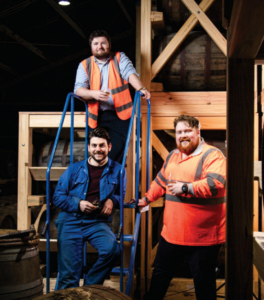In most industries across the nation fixed ladders can be found scaling buildings to roof tops, silos, and other structures. These ladders may look simple and easy, but it takes more than just a few nuts and bolts when erecting a fixed ladder.
Gravity does not mix well when a person is accessing a roof or other structure via a fix ladder. It is vital that you protect your associates from the catastrophic injuries that can happen if a fall were to occur. Keeping ladders at OSHA compliance can greatly reduce the risk of injury to associates or contractors at your site.
If you examine the updated OSHA regulations, you will find that OSHA 1910.28(b)(9) requires general industry to provide fall protection on fixed ladders of 24’ or taller installed on or after November 19, 2018. A fall arrest system will be required on new installations meeting these parameters.
The revised ruling from OSHA phases out ladder wells and cages over the next 20 years, below are the details:
- For caged, fixed ladders erected before November 19, 2018, employers have up to 2036 to install ladder safety or personal fall arrest systems (1910.28(b)(9)(i)(A))
- For new fixed ladders erected on or after November 19, 2018, the employer must equip the ladder with a ladder safety or personal fall arrest system (1910.28(b)(9)(i)(B))
- For ladder repairs and replacements, when an employer replaces any portion of a fixed ladder, the replacement must be equipped with a ladder safety or personal fall arrest system (1910.28(b)(9)(i)(C))
- After November 18, 2036, all fixed ladders must be equipped with a ladder safety or personal fall arrest system (1910.28(b)(9)(i)(D))
It is important to note that cages around a fixed ladder will still be acceptable for the OSHA standard, however, in addition to the cage, a ladder safety or personal fall arrest system is required.
When taking a quick look at your ladder systems, here are a few numbers to remember:
- 24 Feet – Any ladder extended 24 feet or higher requires a safety ladder or personal fall arrest system.
- 16 Inches – Ladder rungs, steps, and cleats must have a minimum clear width of 16 inches.
- 7 Inches – The minimum perpendicular distance from the rungs to the nearest permanent object behind the ladder is 7 inches.
- 42 Inches – To protect the worker exiting a ladder, 42-inch high grab bar extension above the access level or landing is required.
- 24 Inches – The extension above the access level must be at least 24 inches wide to accommodate the width of climber’s body.
Inspect ladders at your facility or have a site assessment completed to determine if your ladders are compliant or if any updates are needed to achieve compliance and overall employee safety.





